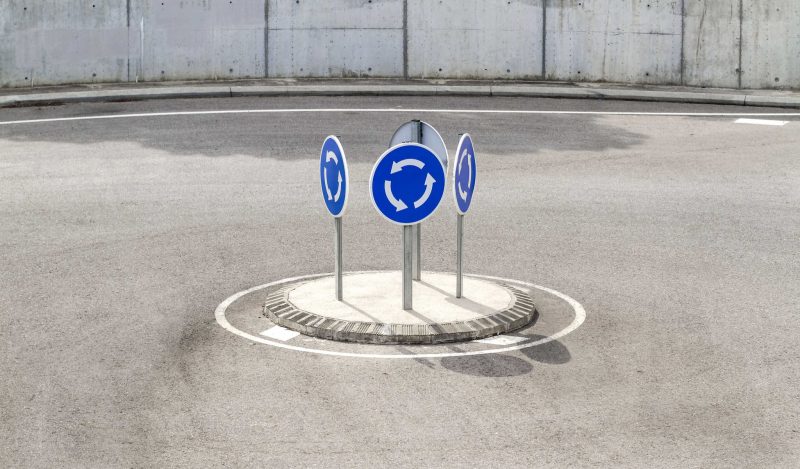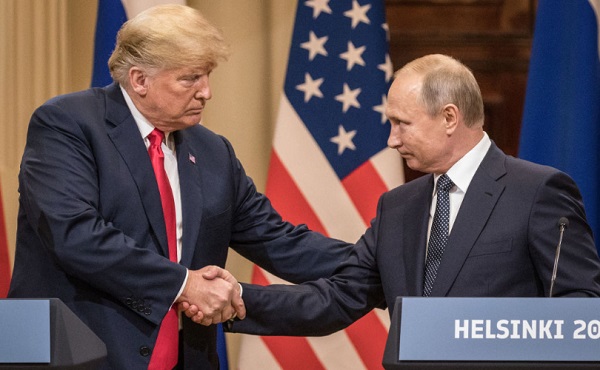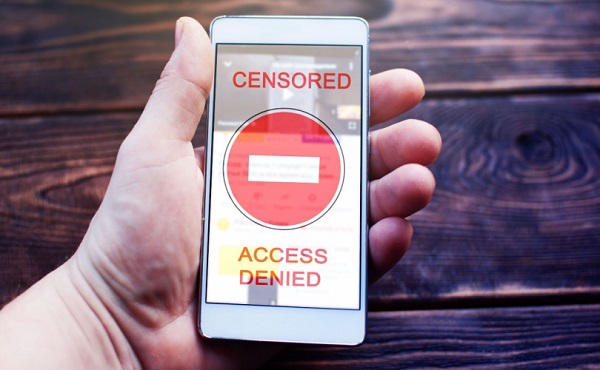Brownstone Institute
The Naked Absurdity of Global Public Health

BY
“Those Who Can Make You Believe Absurdities, Can Make You Commit Atrocities.” ~ Voltaire.
Something is fundamentally wrong with global public health. More accurately, something is fundamentally wrong with the mindset of global health professionals, particularly those in positions of leadership. It has become normal to speak, repeat, and defend complete absurdity, as if illusions and fantasies are real. There are no sanctions for operating in this way – indeed it is proving highly successful. Statements of demonstrable stupidity are becoming prerequisites for career advancement and the approval of peers. It is like living within a fantasy, except those it kills are real.
The world at large struggles to understand that they could be fed falsehoods on this level. Most people still consider the experts quoted in the media to be credible, serious people. They believe that those leading the health professions would not habitually lie. For professionals to act like this, they would have to be deeply troubled, insecure people, or they would have to be quite malevolent. This does not fit the popular image of global health experts.
Beyond individuals, we now have entire institutions mocking reality. They lie to each other and the public, repeat these lies, and applaud each other for doing so. They can state obvious stupidity with impunity as a once critical media now sees its role as backing them unquestioningly, disseminating their pronouncements and suppressing any information to the contrary for a perceived public good. The emperor’s obvious nakedness has become proof that he is clothed. Acknowledging the evidence of one’s eyes as he parades his wares is tantamount to the crime of Galileo and must be treated accordingly.
The opportunity of COVID-19
Over the last two years, the world’s premier health institutions pretended that humans were unlikely to develop effective clinical immunity in response to coronavirus infections, despite experience with the four common seasonal coronaviruses and the SARS-1 confirming that we do. Despite established understanding of mucosal immunity and T-cell function, the public were asked to believe that antibody titers against a single highly-variable pharmaceutically-induced protein were the only valid measure of effective immunity. The leaders and staff within these health organizations knew this was frankly silly, and that the evidence on COVID-19 was showing otherwise.
All these institutions knew that, in time, the relative effectiveness of post-infection immunity would become obvious to all. But this did not stop them from stating that vaccines were ‘the only way out of the pandemic,’ as if established fact, denigrating those who thought differently and ignoring the natural resolution of prior pandemics. Despite accumulating evidence that the obvious is indeed obvious, this position of fallacy still drives the COVAX global vaccination program. Current evidence that post-infection immunity is more effective than vaccination is of no value– truth simply does not matter to these people anymore.
In 2019, the term ‘genetic medicines’ referred to pharmaceuticals based on introduction of genetic material into a body for therapeutic purposes. It is standard industry terminology for mRNA formulations such as those that induce SARS-CoV-2 (COVID-19) spike protein production. In 2020, institutions that previously used this term for COVID-19 vaccines decided that continuing to do so would equate to promoting a ‘conspiracy theory’ – a particularly severe transgression. These mRNA medicines work by inserting synthetic genes into a person’s cells, using the host’s intracellular machinery to translate the genetic sequence into a foreign protein that is expressed by the cell. These cells are then recognized as foreign by the host’s immune system and killed. While this change to the definition of vaccine can be justified by the end result (an immune response), mRNA vaccines are indeed, as the pharmaceutical industry notes, genetic medicines.
It was considered necessary that the public consider such medicines to be indistinguishable from conventional vaccines that present proteins or other antigens to the immune system through an entirely different mechanism. The fallacy was formed to support the claim that if one type of vaccine was safe and effective, then the other must be.
The entire pharmaceutical industry knows this is an absurdity; mRNA injections may well be safe and effective, or they may not, but they are no more like injecting a protein or attenuated virus than riding a bicycle is to riding a train. If the department of transport told us that railways prove that bicycles are safe and effective, we would laugh. Except we wouldn’t anymore.
We would, apparently, signal our agreement because to identify differences between bicycles and trains would be evidence of incorrect thinking (misinformation, or a conspiracy theory). Similarly ‘incorrect’ thinking regarding COVID-19 has been characterized in the Journal of the American Medical Association, with a nod to Nazism, as a neurodegenerative disorder.
Tedros perfects the art
Tedros Adhanom Ghebreyesus and the World Health Organization (WHO) he leads have perfected the art of mainstreaming the ridiculous through COVAX. With a budget several times higher than any prior international health program, it aims to vaccinate billions of already-immune people in age groups barely affected by COVID-19. WHO is aware that the vaccines do not significantly reduce spread, that post-infection immunity is effective, and that vaccinating people with post-infection immunity will provide minimal additional clinical benefit.
WHO promotes COVAX under the banner “No one is safe until all are safe.” WHO thus wants the public to believe that vaccinating an individual does not protect them until everyone else is vaccinated, whilst simultaneously believing, as WHO insists, that vaccination against COVID-19 is highly protective for all those who are vaccinated.
The complete incompatibility of these claims, together with the absurdity of claiming that a vaccine that does not stop transmission could protect others and ‘end the pandemic,’ does not matter. The writers and designers of WHO’s speeches and brochures know these opposing claims cannot simultaneously be true. They have found that stating absurdities is rewarded, and that if a young boy points to the emperor’s nakedness he can simply be denigrated and excluded, while the emperor swaggers on.
A pox on us all
Tedros recently proclaimed monkeypox, a virus that had then killed 5 people globally, to be a public health emergency of international concern. His organization’s last such pronouncement contributed to an increase of about 45,000 added malaria child deaths in 2020, over 200,000 additional dead children in South Asia in the same year, rising tuberculosis, millions of girls forced into child marriage and sexual slavery, and the decimation of global education that will entrench future poverty for billions. Yet this man managed to concentrate the world on monkeypox, an outbreak of such tiny impact that annual mortality from bungee-jumping will likely be higher.
Whole countries followed his lead, global media ran headlines on how many people had this chicken pox-like disease, and the world pretended the emergency was real. Once this man would have been laughed out of office, but the world of 2022 considered this blatant absurdity normal and acceptable. It no longer expects or requires rational discourse from people in authority. Stupidity is expected and its dictates adopted.
The purpose of pointing out the above is not to single out WHO. WHO’s fantasy statements are repeated and supported by its peer health organizations. Gavi (the vaccine alliance), CEPI (Coalition for Epidemic Preparedness Innovations), UNICEF (the UN agency that once concentrated on vaccinating children but now leads mass vaccination against a disease targeting the elderly) all apparently agree that ‘No one is safe until everyone is safe.’
This needs to be understood as an entire industrial culture – global health is a business and its primary role is to support itself. Its members know their pronouncements are false or illogical, but dishonesty has become an important tool to achieve their goals. It fuels income and expansion, and therefore must be good. Many private corporations would act similarly if advertising standards were not enforced. These international health agencies operate outside of national jurisdictions, and so have no enforceable standards. The media, once a check on such malfeasance and misgovernance, has ceased to value truth.
The COVID-19 event has opened the gate to a new era in public health, and the absurdity of the monkeypox ‘emergency’ is an example of what is coming. A pandemic industry that has formed around these agencies, now with the weight of the World Bank behind it, is asking us to believe that pandemics are becoming more frequent, and that the world’s diminishing wildlife poses an ever-increasing threat.
WHO’s own publications may tell us that pandemics have occurred just 5 times in 100 years, with overall reducing mortality, but this is of no consequence. Fantasy, when repeated sufficiently in a matter-of-fact manner, can displace objective reality as a driver of policy. The removal of employment, disruption of supply lines, increase in mass poverty and the economic wreckage of the COVID-19 response is used to justify a call for repetition of the same, more easily and more often, by the same people who orchestrated it.
Killing by killing truth
Most health professionals, given a few minutes to sit down and think this through, can see that something is wrong. However, it is hard to hold onto this reality if the lie opposing it is repeated widely and frequently, echoed by all one’s peers. People who understand infection control can still put on a mask at a restaurant door to remove it at a table just meters away. Humans are fully capable of living a lie, of embracing absurdity in life and work, just to get along. We now have an entire international industry fully reliant on acceptance of such absurdity for its survival. Despite the risks, it works.
COVID-19 showed us how willing many people are to join the harming and denigration of others to defend positions they know are illogical and untrue. To see one’s own profession indulging in such behavior is difficult to reconcile, when that profession is in some ways entrusted with the welfare of others. But we should not be surprised, we are all human and this promotion of global harm will continue as long as it reaps local rewards. People do not easily tire of wrong – they get accustomed to it.
This institutional self-delusion would be of little consequence, even humorous, if it only involved an emperor walking the streets of a children’s tale. But many of the children in this tale are now dead from malaria and malnutrition, millions of girls are enduring nightly rape and tens of millions denied education will spend their lives in poverty. They did not ask these people in Geneva, Washington, or Brussels to remove their food security, education and healthcare to ostensibly protect elderly elsewhere from COVID-19.
They are not asking for a growing pandemic bureaucracy to gorge itself whilst entrenching further inequality. Our response to this level of institutional dishonesty and absurdity must not be one of amusement but rather of disgust, and concern for what could happen next.
Brownstone Institute
Net Zero: The Mystery of the Falling Fertility

From the Brownstone Institute
By
If you want to argue that a mysterious factor X is responsible for the drop in fertility, you will have to explain (1) why the factor affected only the vaccinated, and (2) why it started affecting them at about the time of vaccination.
In January 2022, the number of children born in the Czech Republic suddenly decreased by about 10%. By the end of 2022, it had become clear that this was a signal: All the monthly numbers of newborns were mysteriously low.
In April 2023, I wrote a piece for a Czech investigative platform InFakta and suggested that this unexpected phenomenon might be connected to the aggressive vaccination campaign that had started approximately 9 months before the drop in natality. Denik N – a Czech equivalent of the New York Times – immediately came forward with a “devastating takedown” of my article, labeled me a liar and claimed that the pattern can be explained by demographics: There were fewer women in the population and they were getting older.
To compare fertility across countries (and time), the so-called Total Fertility Rate (TFR) is used. Roughly speaking, it is the average number of children that are born to a woman over her lifetime. TFR is independent of the number of women and of their age structure. Figure 1 below shows the evolution of TFR in several European countries between 2001 and 2023. I selected countries that experienced a similar drop in TFR in 2022 as the Czech Republic.

So, by the end of 2023, the following two points were clear:
- The drop in natality in the Czech Republic in 2022 could not be explained by demographic factors. Total fertility rate – which is independent of the number of women and their age structure – dropped sharply in 2022 and has been decreasing ever since. The data for 2024 show that the Czech TFR has decreased further to 1.37.
- Many other European countries experienced the same dramatic and unexpected decrease in fertility that started at the beginning of 2022. I have selected some of them for Figure 1 but there are more: The Netherlands, Norway, Slovakia, Slovenia, and Sweden. On the other hand, there are some countries that do not show a sudden drop in TFR, but rather a steady decline over a longer period (e.g. Belgium, France, UK, Greece, or Italy). Notable exceptions are Bulgaria, Spain, and Portugal where fertility has increased (albeit from very low numbers). The Human Fertility Project database has all the numbers.
This data pattern is so amazing and unexpected that even the mainstream media in Europe cannot avoid the problem completely. From time to time, talking heads with many academic titles appear and push one of the politically correct narratives: It’s Putin! (Spoiler alert: The war started in February 2022; however, children not born in 2022 were not conceived in 2021). It’s the inflation caused by Putin! (Sorry, that was even later). It’s the demographics! (Nope, see above, TFR is independent of the demographics).
Thus, the “v” word keeps creeping back into people’s minds and the Web’s Wild West is ripe with speculation. We decided not to speculate but to wrestle some more data from the Czech government. For many months, we were trying to acquire the number of newborns in each month, broken down by age and vaccination status of the mother. The post-socialist health-care system of our country is a double-edged sword: On one hand, the state collects much more data about citizens than an American would believe. On the other hand, we have an equivalent of the FOIA, and we are not afraid to use it. After many months of fruitless correspondence with the authorities, we turned to Jitka Chalankova – a Czech Ron Johnson in skirts – who finally managed to obtain an invaluable data sheet.
To my knowledge, the datasheet (now publicly available with an English translation here) is the only officially released dataset containing a breakdown of newborns by the Covid-19 vaccination status of the mother. We requested much more detailed data, but this is all we got. The data contains the number of births per month between January 2021 and December 2023 given by women (aged 18-39) who were vaccinated, i.e., had received at least one Covid vaccine dose by the date of delivery, and by women who were unvaccinated, i.e., had not received any dose of any Covid vaccine by the date of delivery.
Furthermore, the numbers of births per month by women vaccinated by one or more doses during pregnancy were provided. This enabled us to estimate the number of women who were vaccinated before conception. Then, we used open data on the Czech population structure by age, and open data on Covid vaccination by day, sex, and age.
Combining these three datasets, we were able to estimate the rates of successful conceptions (i.e., conceptions that led to births nine months later) by preconception vaccination status of the mother. Those interested in the technical details of the procedure may read Methods in the newly released paper. It is worth mentioning that the paper had been rejected without review in six high-ranking scientific journals. In Figure 2, we reprint the main finding of our analysis.

Figure 2 reveals several interesting patterns that I list here in order of importance:
- Vaccinated women conceived about a third fewer children than would be expected from their share of the population. Unvaccinated women conceived at about the same rate as all women before the pandemic. Thus, a strong association between Covid vaccination status and successful conceptions has been established.
- In the second half of 2021, there was a peak in the rate of conceptions of the unvaccinated (and a corresponding trough in the vaccinated). This points to rather intelligent behavior of Czech women, who – contrary to the official advice – probably avoided vaccination if they wanted to get pregnant. This concentrated the pregnancies in the unvaccinated group and produced the peak.
- In the first half of 2021, there was significant uncertainty in the estimates of the conception rates. The lower estimate of the conception rate in the vaccinated was produced by assuming that all women vaccinated (by at least one dose) during pregnancy were unvaccinated before conception. This was almost certainly true in the first half of 2021 because the vaccines were not available prior to 2021. The upper estimate was produced by assuming that all women vaccinated (by at least one dose) during pregnancy also received at least one dose before conception. This was probably closer to the truth in the second part of 2021. Thus, we think that the true conception rates for the vaccinated start close to the lower bound in early 2021 and end close to the upper bound in early 2022. Once again, we would like to be much more precise, but we have to work with what we have got.
Now that the association between Covid-19 vaccination and lower rates of conception has been established, the one important question looms: Is this association causal? In other words, did the Covid-19 vaccines really prevent women from getting pregnant?
The guardians of the official narrative brush off our findings and say that the difference is easily explained by confounding: The vaccinated tend to be older, more educated, city-dwelling, more climate change aware…you name it. That all may well be true, but in early 2022, the TFR of the whole population dropped sharply and has been decreasing ever since.
So, something must have happened in the spring of 2021. Had the population of women just spontaneously separated into two groups – rednecks who wanted kids and didn’t want the jab, and city slickers who didn’t want kids and wanted the jab – the fertility rate of the unvaccinated would indeed be much higher than that of the vaccinated. In that respect, such a selection bias could explain the observed pattern. However, had this been true, the total TFR of the whole population would have remained constant.
But this is not what happened. For some reason, the TFR of the whole population jumped down in January 2022 and has been decreasing ever since. And we have just shown that, for some reason, this decrease in fertility affected only the vaccinated. So, if you want to argue that a mysterious factor X is responsible for the drop in fertility, you will have to explain (1) why the factor affected only the vaccinated, and (2) why it started affecting them at about the time of vaccination. That is a tall order. Mr. Occam and I both think that X = the vaccine is the simplest explanation.
What really puzzles me is the continuation of the trend. If the vaccines really prevented conception, shouldn’t the effect have been transient? It’s been more than three years since the mass vaccination event, but fertility rates still keep falling. If this trend continues for another five years, we may as well stop arguing about pensions, defense spending, healthcare reform, and education – because we are done.
We are in the middle of what may be the biggest fertility crisis in the history of mankind. The reason for the collapse in fertility is not known. The governments of many European countries have the data that would unlock the mystery. Yet, it seems that no one wants to know.
Author
Brownstone Institute
FDA Exposed: Hundreds of Drugs Approved without Proof They Work

From the Brownstone Institute
By
The US Food and Drug Administration (FDA) has approved hundreds of drugs without proof that they work—and in some cases, despite evidence that they cause harm.
That’s the finding of a blistering two-year investigation by medical journalists Jeanne Lenzer and Shannon Brownlee, published by The Lever.
Reviewing more than 400 drug approvals between 2013 and 2022, the authors found the agency repeatedly ignored its own scientific standards.
One expert put it bluntly—the FDA’s threshold for evidence “can’t go any lower because it’s already in the dirt.”
A System Built on Weak Evidence
The findings were damning—73% of drugs approved by the FDA during the study period failed to meet all four basic criteria for demonstrating “substantial evidence” of effectiveness.
Those four criteria—presence of a control group, replication in two well-conducted trials, blinding of participants and investigators, and the use of clinical endpoints like symptom relief or extended survival—are supposed to be the bedrock of drug evaluation.
Yet only 28% of drugs met all four criteria—40 drugs met none.
These aren’t obscure technicalities—they are the most basic safeguards to protect patients from ineffective or dangerous treatments.
But under political and industry pressure, the FDA has increasingly abandoned them in favour of speed and so-called “regulatory flexibility.”
Since the early 1990s, the agency has relied heavily on expedited pathways that fast-track drugs to market.
In theory, this balances urgency with scientific rigour. In practice, it has flipped the process. Companies can now get drugs approved before proving that they work, with the promise of follow-up trials later.
But, as Lenzer and Brownlee revealed, “Nearly half of the required follow-up studies are never completed—and those that are often fail to show the drugs work, even while they remain on the market.”
“This represents a seismic shift in FDA regulation that has been quietly accomplished with virtually no awareness by doctors or the public,” they added.
More than half the approvals examined relied on preliminary data—not solid evidence that patients lived longer, felt better, or functioned more effectively.
And even when follow-up studies are conducted, many rely on the same flawed surrogate measures rather than hard clinical outcomes.
The result: a regulatory system where the FDA no longer acts as a gatekeeper—but as a passive observer.
Cancer Drugs: High Stakes, Low Standards
Nowhere is this failure more visible than in oncology.
Only 3 out of 123 cancer drugs approved between 2013 and 2022 met all four of the FDA’s basic scientific standards.
Most—81%—were approved based on surrogate endpoints like tumour shrinkage, without any evidence that they improved survival or quality of life.
Take Copiktra, for example—a drug approved in 2018 for blood cancers. The FDA gave it the green light based on improved “progression-free survival,” a measure of how long a tumour stays stable.
But a review of post-marketing data showed that patients taking Copiktra died 11 months earlier than those on a comparator drug.
It took six years after those studies showed the drug reduced patients’ survival for the FDA to warn the public that Copiktra should not be used as a first- or second-line treatment for certain types of leukaemia and lymphoma, citing “an increased risk of treatment-related mortality.”
Elmiron: Ineffective, Dangerous—And Still on the Market
Another striking case is Elmiron, approved in 1996 for interstitial cystitis—a painful bladder condition.
The FDA authorized it based on “close to zero data,” on the condition that the company conduct a follow-up study to determine whether it actually worked.
That study wasn’t completed for 18 years—and when it was, it showed Elmiron was no better than placebo.
In the meantime, hundreds of patients suffered vision loss or blindness. Others were hospitalized with colitis. Some died.
Yet Elmiron is still on the market today. Doctors continue to prescribe it.
“Hundreds of thousands of patients have been exposed to the drug, and the American Urological Association lists it as the only FDA-approved medication for interstitial cystitis,” Lenzer and Brownlee reported.
“Dangling Approvals” and Regulatory Paralysis
The FDA even has a term—”dangling approvals”—for drugs that remain on the market despite failed or missing follow-up trials.
One notorious case is Avastin, approved in 2008 for metastatic breast cancer.
It was fast-tracked, again, based on ‘progression-free survival.’ But after five clinical trials showed no improvement in overall survival—and raised serious safety concerns—the FDA moved to revoke its approval for metastatic breast cancer.
The backlash was intense.
Drug companies and patient advocacy groups launched a campaign to keep Avastin on the market. FDA staff received violent threats. Police were posted outside the agency’s building.
The fallout was so severe that for more than two decades afterwards, the FDA did not initiate another involuntary drug withdrawal in the face of industry opposition.
Billions Wasted, Thousands Harmed
Between 2018 and 2021, US taxpayers—through Medicare and Medicaid—paid $18 billion for drugs approved under the condition that follow-up studies would be conducted. Many never were.
The cost in lives is even higher.
A 2015 study found that 86% of cancer drugs approved between 2008 and 2012 based on surrogate outcomes showed no evidence that they helped patients live longer.
An estimated 128,000 Americans die each year from the effects of properly prescribed medications—excluding opioid overdoses. That’s more than all deaths from illegal drugs combined.
A 2024 analysis by Danish physician Peter Gøtzsche found that adverse effects from prescription medicines now rank among the top three causes of death globally.
Doctors Misled by the Drug Labels
Despite the scale of the problem, most patients—and most doctors—have no idea.
A 2016 survey published in JAMA asked practising physicians a simple question—what does FDA approval actually mean?
Only 6% got it right.
The rest assumed that it meant the drug had shown clear, clinically meaningful benefits—such as helping patients live longer or feel better—and that the data was statistically sound.
But the FDA requires none of that.
Drugs can be approved based on a single small study, a surrogate endpoint, or marginal statistical findings. Labels are often based on limited data, yet many doctors take them at face value.
Harvard researcher Aaron Kesselheim, who led the survey, said the results were “disappointing, but not entirely surprising,” noting that few doctors are taught about how the FDA’s regulatory process actually works.
Instead, physicians often rely on labels, marketing, or assumptions—believing that if the FDA has authorized a drug, it must be both safe and effective.
But as The Lever investigation shows, that is not a safe assumption.
And without that knowledge, even well-meaning physicians may prescribe drugs that do little good—and cause real harm.
Who Is the FDA Working for?
In interviews with more than 100 experts, patients, and former regulators, Lenzer and Brownlee found widespread concern that the FDA has lost its way.
Many pointed to the agency’s dependence on industry money. A BMJ investigation in 2022 found that user fees now fund two-thirds of the FDA’s drug review budget—raising serious questions about independence.

Yale physician and regulatory expert Reshma Ramachandran said the system is in urgent need of reform.
“We need an agency that’s independent from the industry it regulates and that uses high-quality science to assess the safety and efficacy of new drugs,” she told The Lever. “Without that, we might as well go back to the days of snake oil and patent medicines.”
For now, patients remain unwitting participants in a vast, unspoken experiment—taking drugs that may never have been properly tested, trusting a regulator that too often fails to protect them.
And as Lenzer and Brownlee conclude, that trust is increasingly misplaced.
- Investigative report by Jeanne Lenzer and Shannon Brownlee at The Lever [link]
- Searchable public drug approval database [link]
- See my talk: Failure of Drug Regulation: Declining standards and institutional corruption
Republished from the author’s Substack
-

 Business19 hours ago
Business19 hours agoMost Canadians say retaliatory tariffs on American goods contribute to raising the price of essential goods at home
-

 National1 day ago
National1 day agoWomen and girls beauty pageant urges dismissal of transgender human rights complaint
-

 Alberta19 hours ago
Alberta19 hours agoCross-Canada NGL corridor will stretch from B.C. to Ontario
-

 International2 days ago
International2 days agoSupport for the Ukraine war continues because no one elected is actually in charge.
-

 Business2 days ago
Business2 days agoTrump slaps Brazil with tariffs over social media censorship
-

 Business2 days ago
Business2 days agoCBC six-figure salaries soar
-

 Business20 hours ago
Business20 hours agoB.C. premier wants a private pipeline—here’s how you make that happen
-

 Addictions2 days ago
Addictions2 days agoCan addiction be predicted—and prevented?






